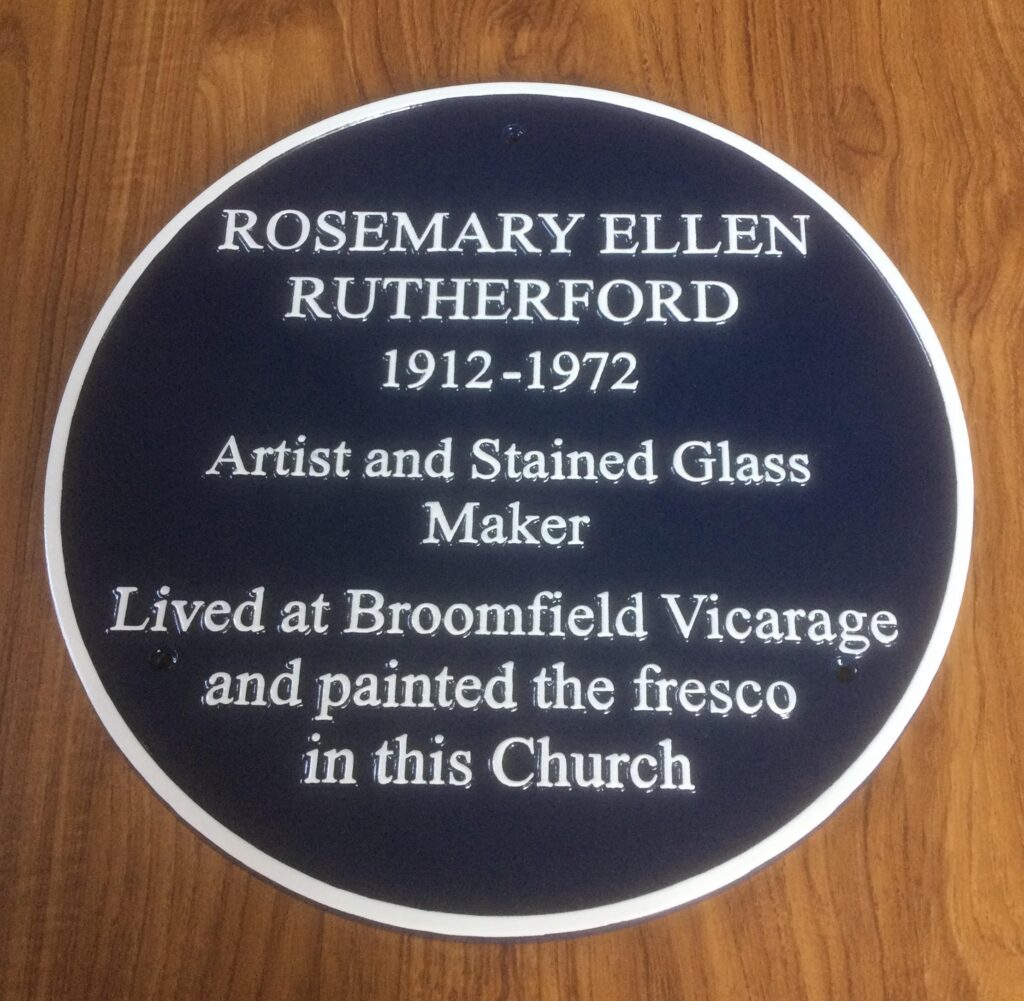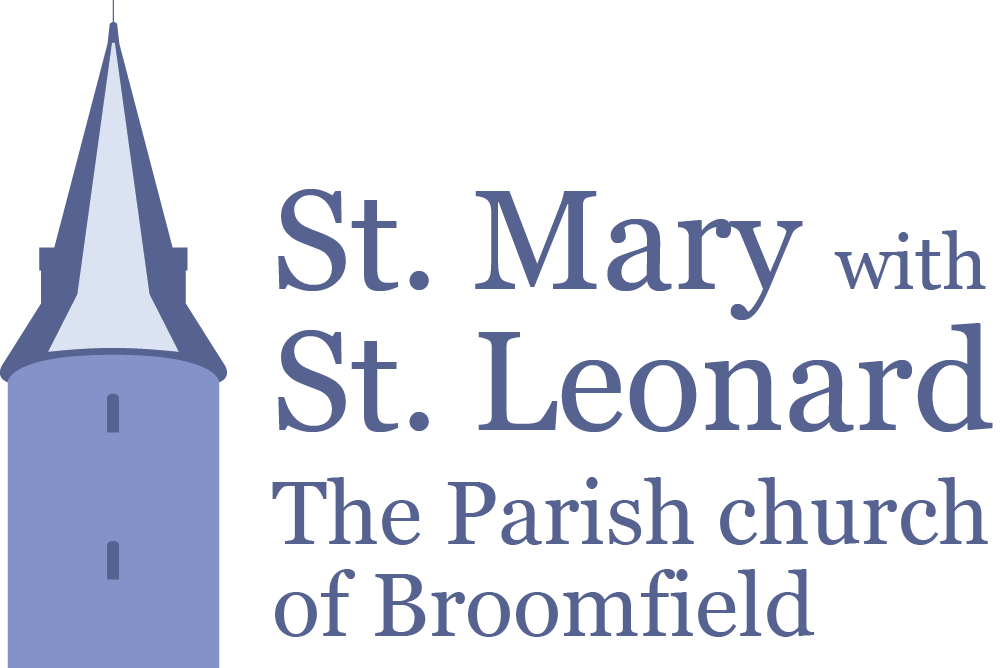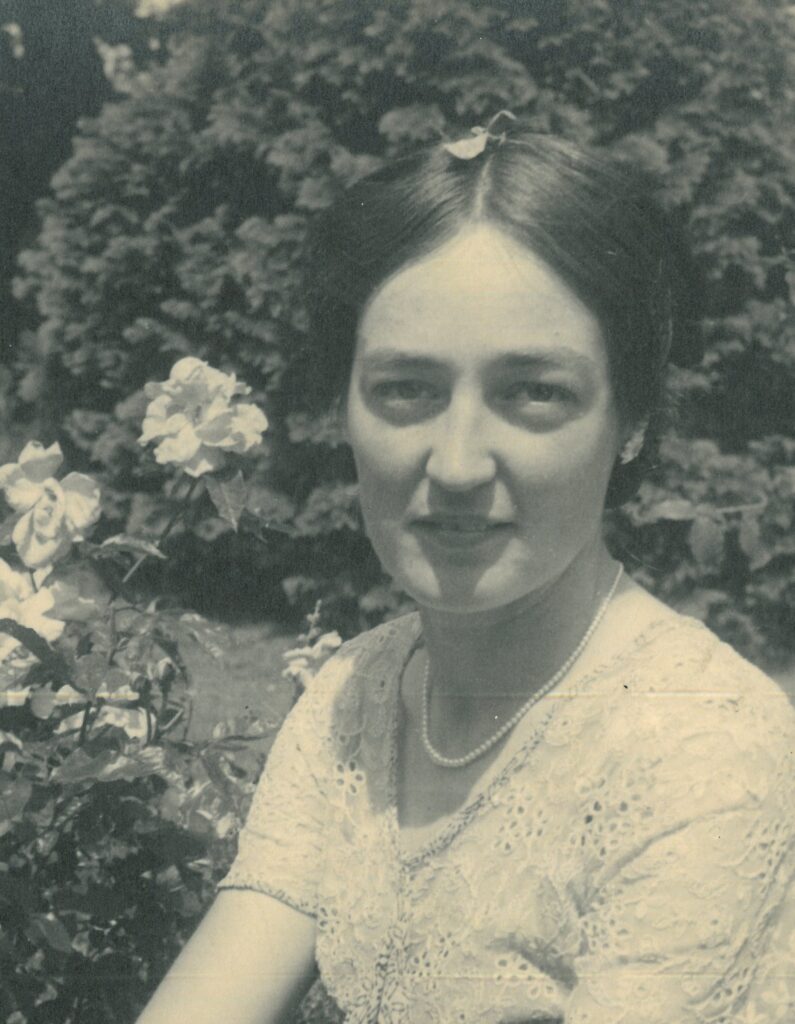
Rosemary Ellen Rutherford was born in 1912 in Batley Green Rectory, in Kings Norton, Worcester, the daughter of the Revd. John Finlay Rutherford and his wife, Florence.
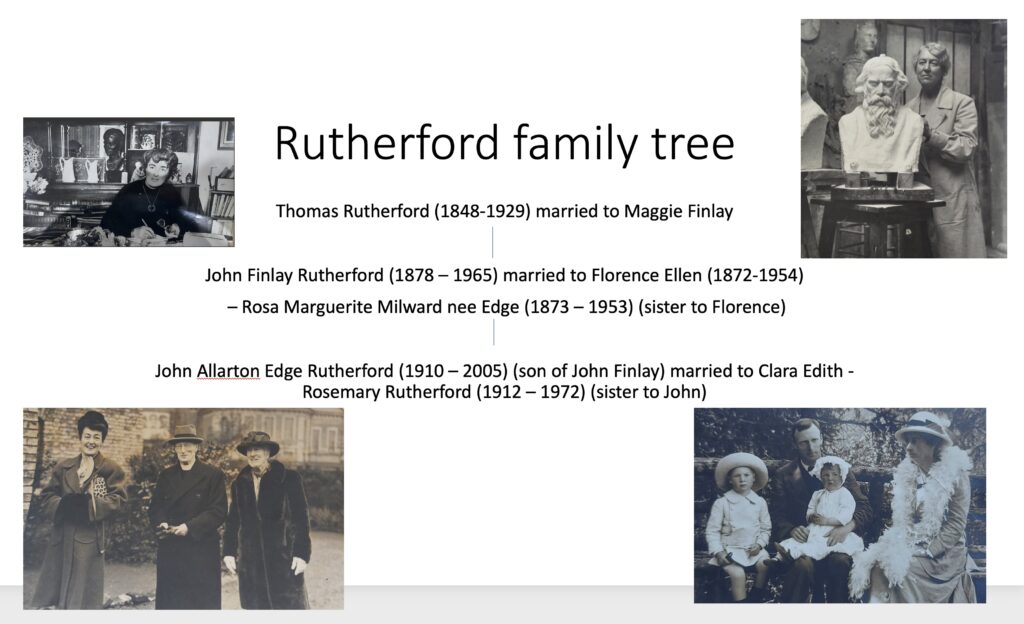
Revd. Rutherford became vicar of the parish of Broomfield in 1929 and the family made a new home in the vicarage (now replaced by the Rutherfords development). Rosemary created many of her paintings and stained-glass windows whilst at the vicarage.
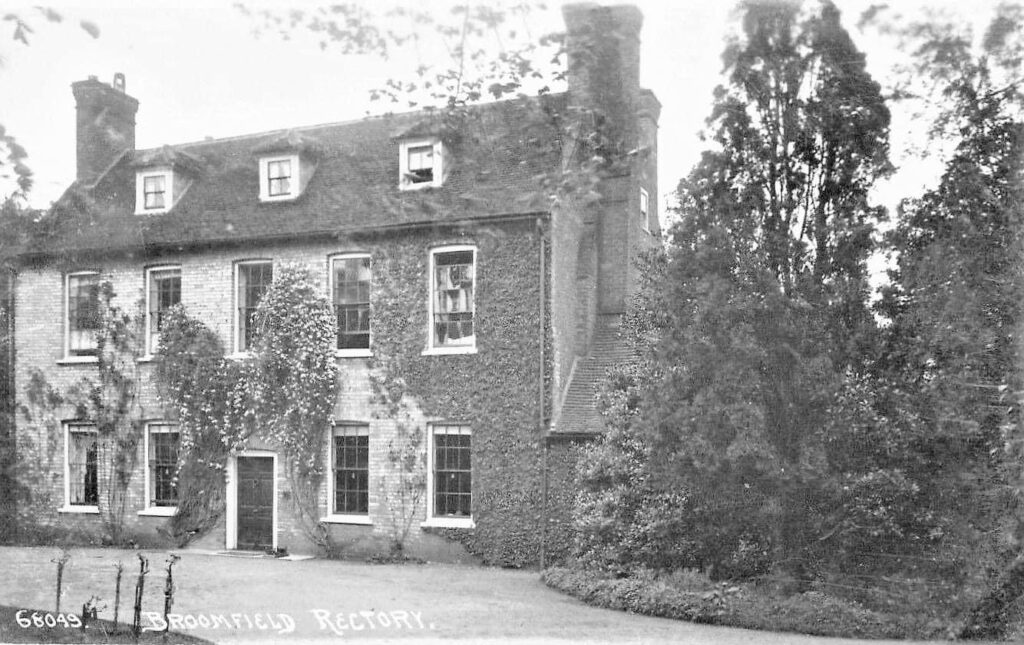
Her father retired in 1958 and the family moved to Godalming in Surrey where her brother, John Alton Rutherford, was chaplain at Charterhouse School.
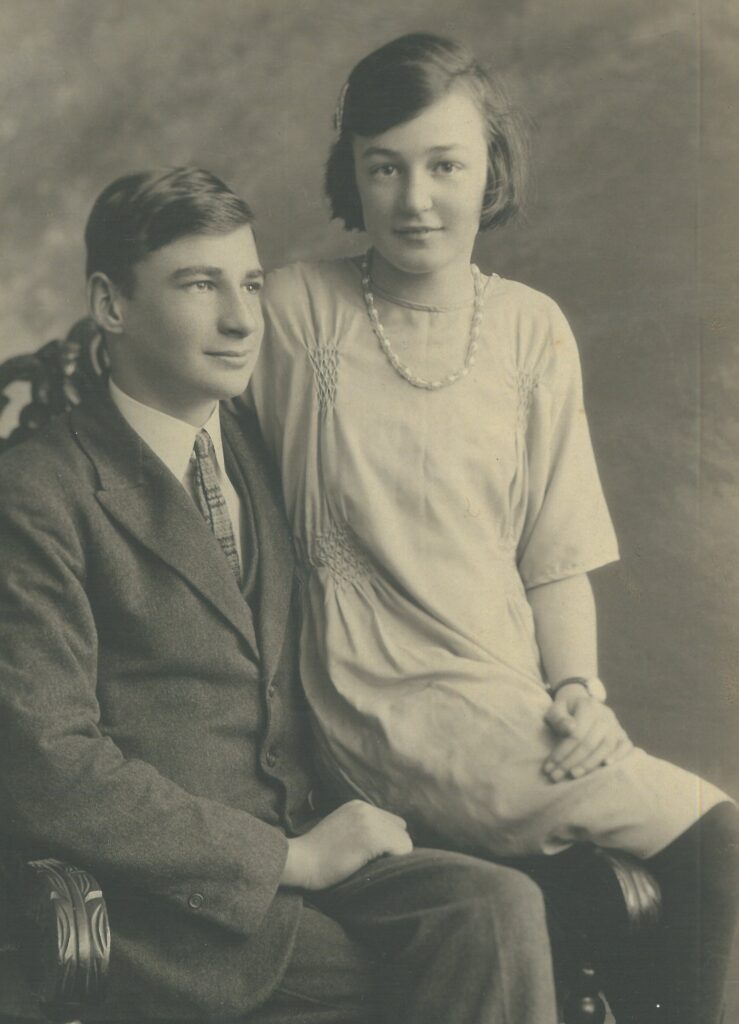
Brother and sister – John Allarton Rutherford (‘Alton’) & Rosemary.
Rosemary studied art in Chelmsford and at the Slade in London in 1930s. She also trained in the art of true fresco. She was a VAD (Voluntary Aid Detachment) Red Cross nurse during the second world war and created a large portfolio of sketches and paintings of all she observed in hospitals, both at home and in Sri Lanka.
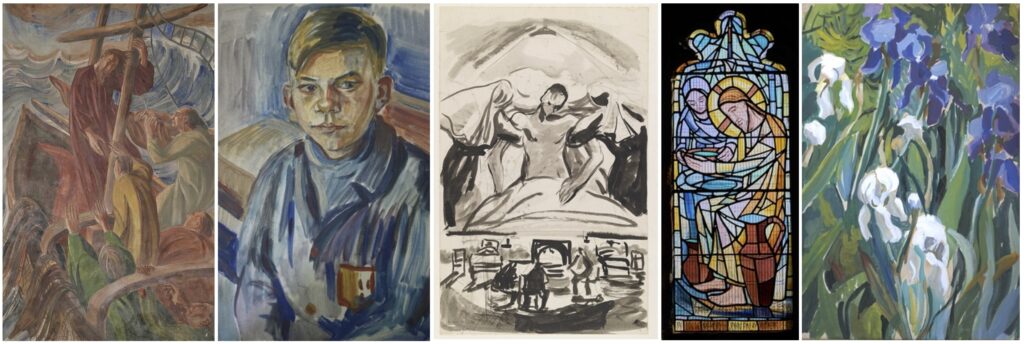
She learnt stained glass making and created 40 windows, including four in Broomfield church to replace those shattered by bombing. She attended the East Anglian School of Painting and Drawing at Benton End run by Cedric Morris where she painted flowers and landscapes. Her paintings have gained renewed interest, not least because she was one of only a few women war artists.
She was strongly influenced by her aunt Marguerite, a sculptor and widely travelled anthropologist. On leave from war service in 1941, she painted the fresco in Broomfield church tower. Its preservation and conservation have been the focus of Project Rutherford to raise funds to repair the spire and tower.
A bomb dropped in the churchyard in 1943 destroying the stained glass windows and the congregation asked Rosemary to design new windows. She trained at the Nicholson studio in London and made four windows for Broomfield church.
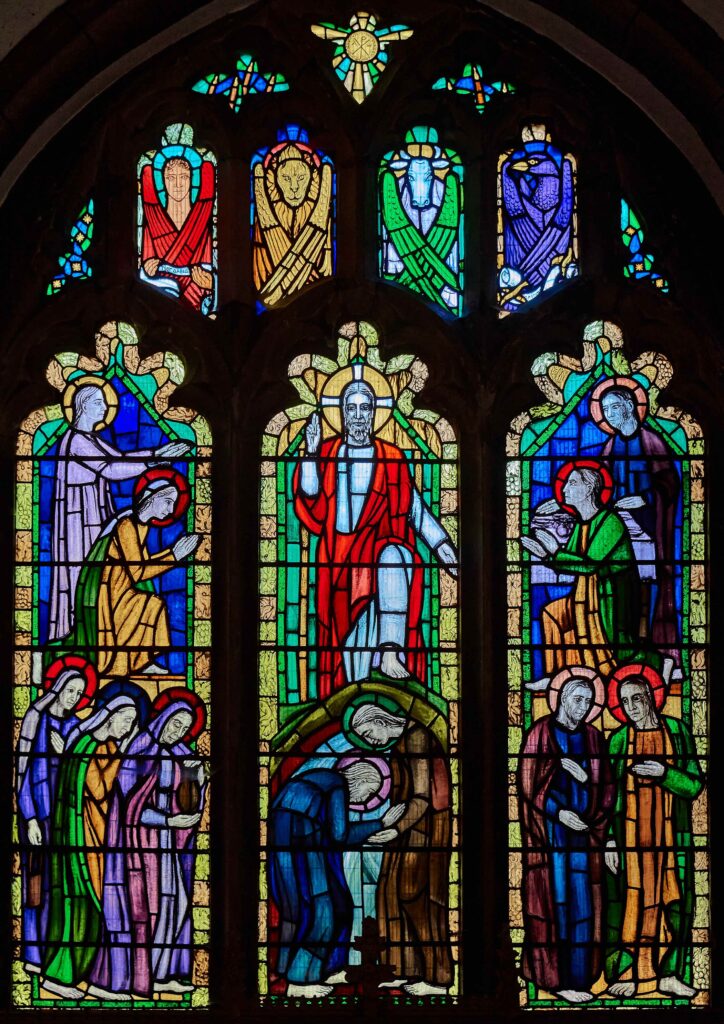
The Resurrection: Rosemary Rutherford’s East Window, St. Mary’s church Broomfield:
The creation of stained glass windows became the backbone of her career, but she was skilled in many aspects of drawing and painting. These are seen in her War Art portfolio at the Nstional Maritime Museum and Imperial War Museum, and her flower and other paintings inspired by her visits to Benton End.
Her life and works are portrayed in the exhibition in the north aisle of St Mary’s Broomfield church and in the associated booklet. A series of talks have taken place to celebrate various aspects of her creativity including the talk about her War Art following the unveiling of the Blue Plaque.
By the late 1930s, Rosemary was beginning to gain recognition as an artist, participating in an exhibition of ‘Essex Art’ in 1937, alongside renowned artists such as Barbara Hepworth, Henry Moore and John Piper. Her artworks were also selected for exhibition at the New English Art Club and the Royal Academy Summer Exhibitions.

Rosemary never married. She was preoccupied not only with her artwork, but also with looking after her infirm mother as well as assisting her brother in bringing up his daughter, Jenny, after his wife died prematurely.
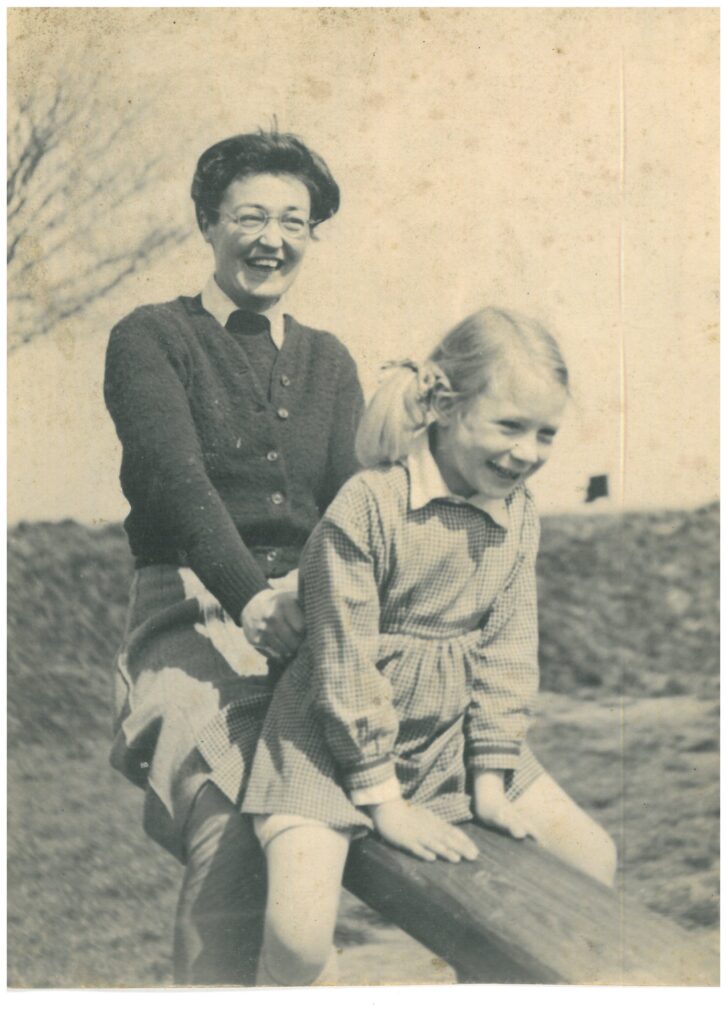
Rosemary & Jenny on a see-saw.
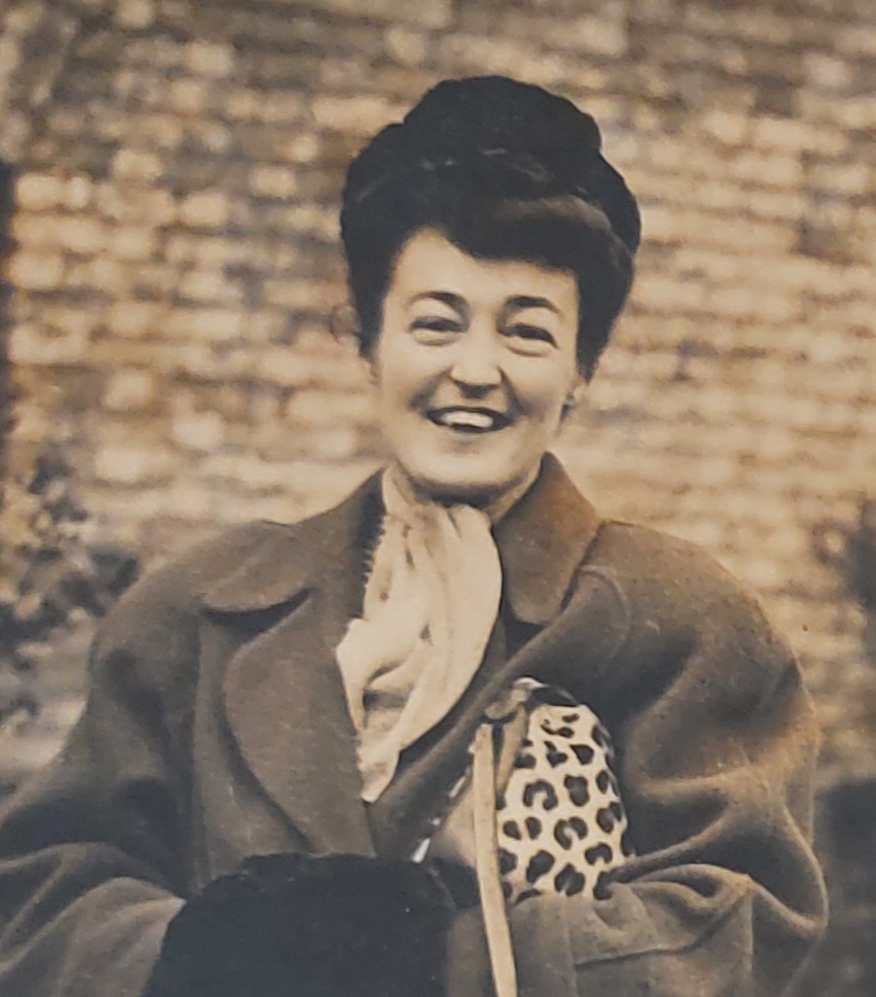
“To be introduced to Rosemary was to be offered immediately tea and homemade buns.” – Ian McVitie Weston
–––––––––––––
Rosemary died aged only 59 due to complications during eye surgery, in 1972. Her ashes were interred in her parents’ graves in Broomfield churchyard.
(Photo: Family gravestones)
